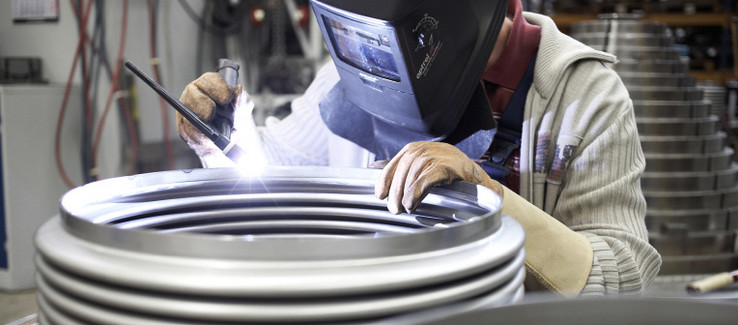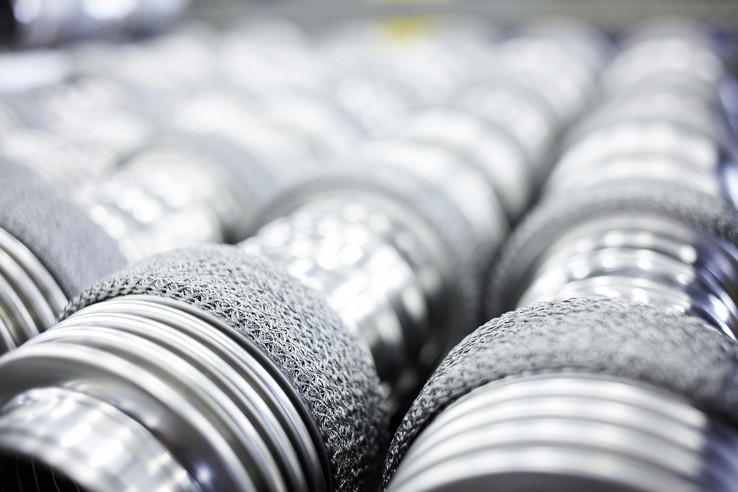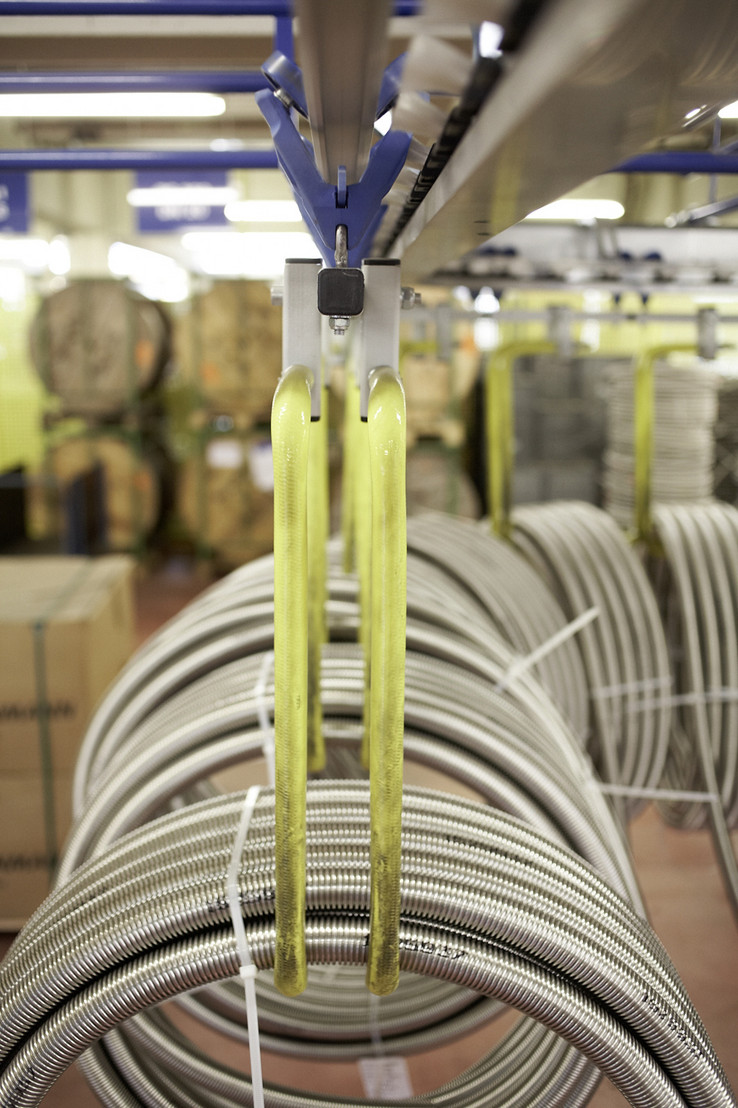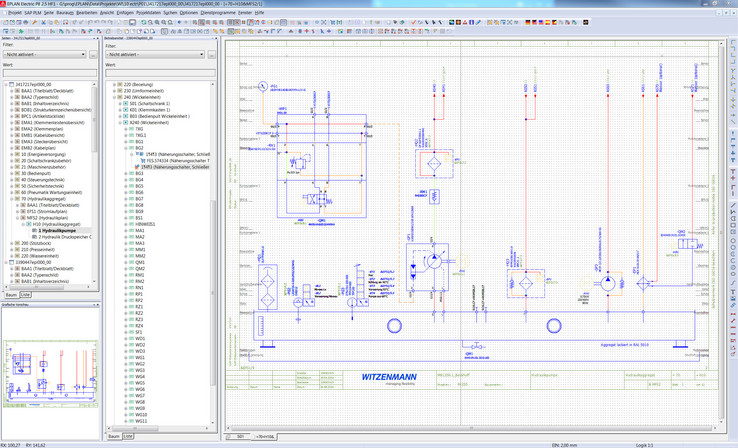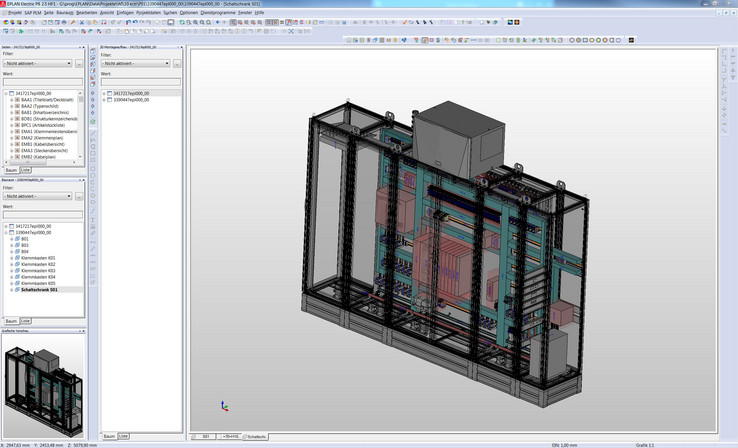Mechatronic bill of materials in special machine construction
At Witzenmann, device tags are becoming the key to harmonizing global mechanical and electrical engineering.
The Pforzheim-based Witzenmann Group is the world's leading manufacturer of flexible metal elements. It’s diversity of product versions and machines represents a major issue for production. This inspired a vision for a "mechatronic bill of materials". Device tags are becoming the key to harmonizing global mechanical and electrical engineering. Company founder Heinrich Witzenmann had a brilliant idea in 1885: he invented the metal hose. Based on this invention, an entire branch of flexible metal hoses has developed – a story of innovation that the company is still writing. Whenever designers require expansion joints to compensate for movements , or need to decouple vibrations, or feed fluid through flexible pipelines, they can utilize products from Witzenmann. "Managing Flexibility" is the corporate mission of this internationally operating company based in Pforzheim, who since 2011, has been the market leader in this branch. It’s product range includes metal bellows, metal hoses, expansion joints, components and pipe supports for cars, commercial vehicles, the aerospace industry as well as for plant, machinery and facilities engineering. The Witzenmann Group currently employs a total of 4000 personnel in 24 locations, and in 2015 achieved a turnover of €580 million.
Market leader building it’s machines in-house
Witzenmann develops tools and machines for its core competencies . It’s products are used in many different areas and in many different quantities. "Equipment ranges from plant and machinery for single-item production with low-volume investment through flexible manufacturing cells and fully automated production lines for quantities in the millions", says Timo Conzelmann, electrical designer at Witzenmann GmbH, summarizing the challenges they face. By integrating tool-making and mechanical engineering at an early stage enables manufacturing and assembly requirements to be considered right at the product design stage. Specific components for customers can then be completed much faster and more smoothly by taking a targeted process-development approach – which also results in optimal process security and quality. Witzenmann has extensive experience in integrating processes such as welding, laser processes , soldering, forming,expanding, punching, hydraulic metal-forming, mechanical metal-forming, labelling and testing. This makes the company a specialist in providing assemblies requiring the manufacture of flexible components. Witzenmann uses EPLAN Electric P8, currently Version 2.5, for the electrical engineering of all it’s machines. The EPLAN Pro Panel solution has also been installed at Pforzheim for control cabinet engineering and the EPLAN Fluid software for fluid power engineering.
Expertise to remain in-house
Up to 2013, electrical design involved gradually incorporating modules from the EPLAN CAE system to document electrical equipment within machines and to modify supplier plans as required. Then came a change in the approach: "We wanted to retain even more expertise in-house so we took on the electrical and software engineering of our machines", recallsTimo Conzelmann. "We changed our processes and used EPLAN as the basis for this change. We now see a machine's development from its conception to assembly. We use EPLAN not only as a tool, but also apply its options to link to SAP, our ERP system". Witzenmann uses the Engineering Control Center (ECTR) to access the component database in SAP. "We now portray the complete machine in CAD and not just it’s mechanical aspects, thereby merging electrical and mechanical design", says Jürgen Rausch, the IT project leader at Witzenmann.
Standardizing seperate structures
The vision behind this was a shared mechatronic bill of materials for the two worlds of "mechanical" and "electrical" engineering. The challenge was to bring the different structures from the CAD and electrical CAE systems under one roof. The common denominator for both systems is now the device tag. eCl@ss, the cross-branch classification and product description standard, is used for classifying and documenting technical features and harmonizes the previously seperate electrical and mechanical engineering structures. Common features are now available to enable EPLAN to be used for mechanical engineering. This involved a long process that could not be implemented overnight and required flexibility from all departments involved. It was also a process in which EPLAN Consulting supported all those affected at Witzenmann. This required a new approach to all the steps in the developmental process. Structuring of the schematic circuit diagram was jointly agreed so that it could be used also by mechanical design. As already mentioned, the common denominator is now the device tag. It is used to provide guidelines and standards on the design of a circuit diagram which can then be integrated into the ECTR. EPLAN can now be used to meet mechanical engineering requirements. All in all, a lot of work was required until the first virtual machine was created. Timo Conzelmann indicated how well it works in practice: "Previously, a pneumatic cylinder was worked on in three areas of engineering. Thanks to standardization from using device tags, it is now identical in the three worlds."
Benefits from simplified processes
Witzenmann uses service providers for control cabinet construction. Conzelmann: "Working with our service providers is simple and reliable thanks to EPLAN Pro Panel". The scripts developed in-house, optimally tailored to company requirements, greatly simplify the approval procedures. "Altogether, these aspects enable savings of up to 20% on control cabinet costs", sums up Jürgen Rausch. "We provide suppliers not only with 3D drawings but also the drilling patterns for the processing centres", says Timo Conzelmann. "It all works very reliably. Suppliers are linked to us through a lean process chain and the quality of the data means no extra costs through errors or the need to query". Jürgen Rausch highlights further benefits: "EPLAN outputs documentation in PDF format so we get global access to a machine's documentation. Intelligent PDF creation – in our case in German, English and Spanish – is simply great".
Configuration to replace developing from scratch
Now that the vision for mechatronic bill of materials has been realized, the next task is already here: engineering reusability. New machines are to be generated by configuration from the one-off creation of engineering modules. "To configure a new machine from the sub-projects of existing machines, we divide the main project into sub-projects to enable the easy addition and deletion of standard modules. This will make us faster and cheaper", says Timo Conzelmann with a view to the future in electrical design. "If, for example, a welding machine needs to be equipped with a saw, we just add the 'saw' module at a click. We don't have to re-design it every time from scratch". Despite all the virtuality around a machine, minor modifications by Witzenmann in machine construction and installation are still necessary. This mainly involves on-site cable routing which usually requires specific planning. Cable routing is therefore to be given special attention for the future.
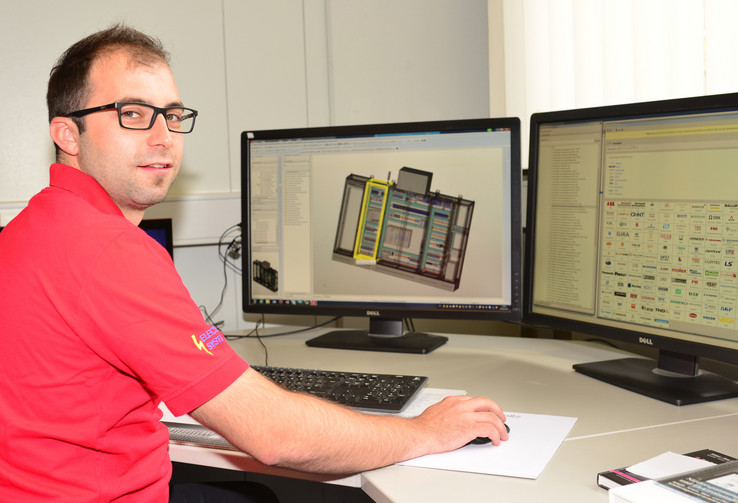
"Standards are the future in the engineering of machines", explains Timo Conzelmann, electrical designer at Witzenmann GmbH.
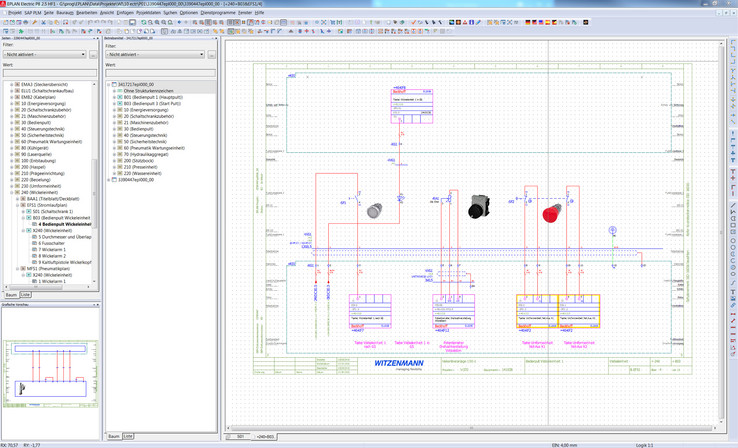
Witzenmann uses EPLAN Electric P8 to design, document and manage its electrical engineering projects.
©Witzenmann GmbH


